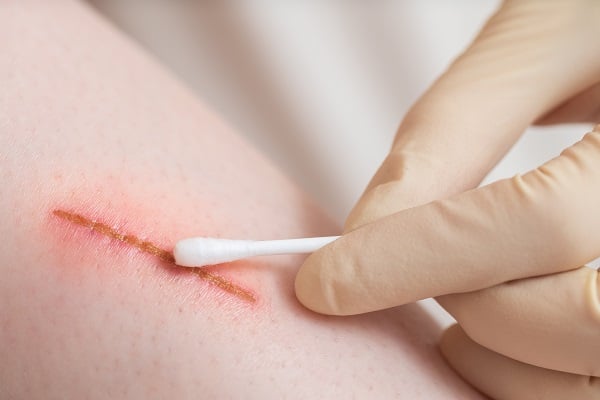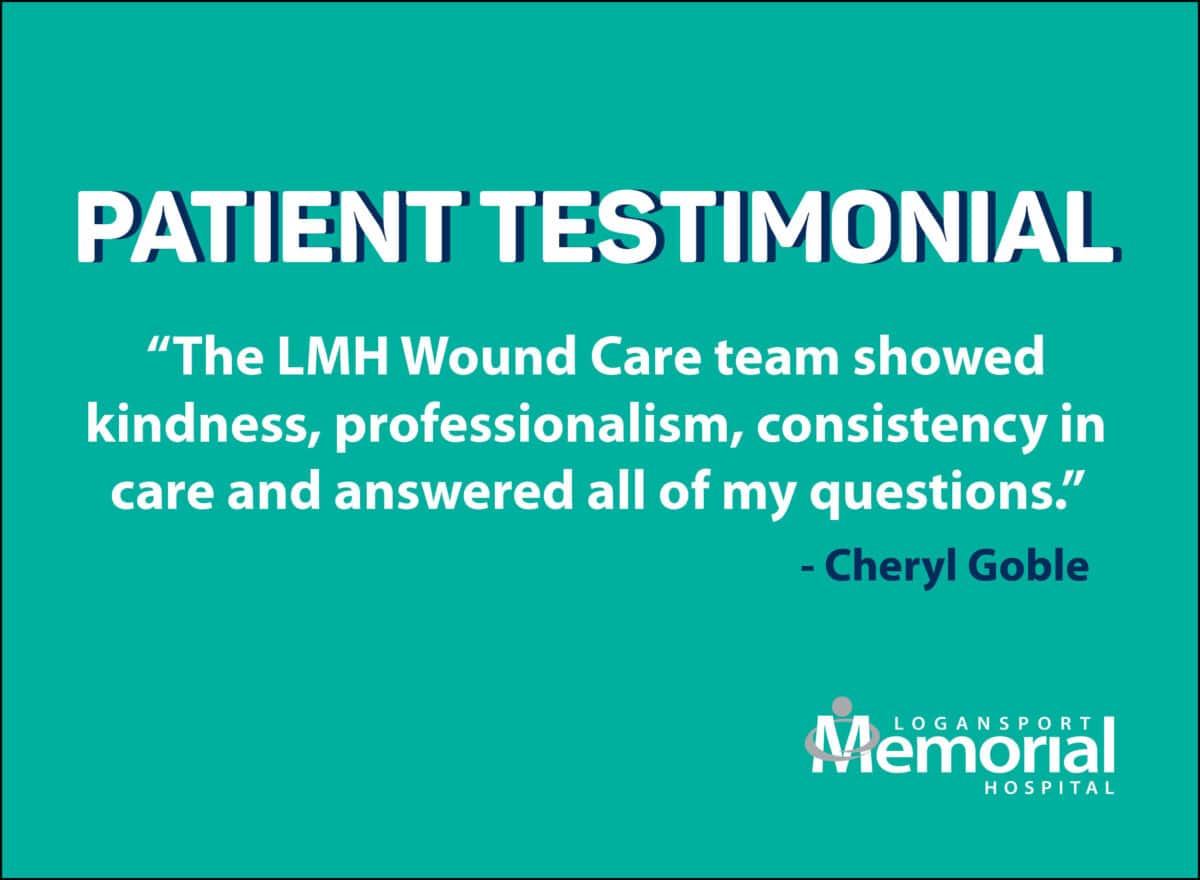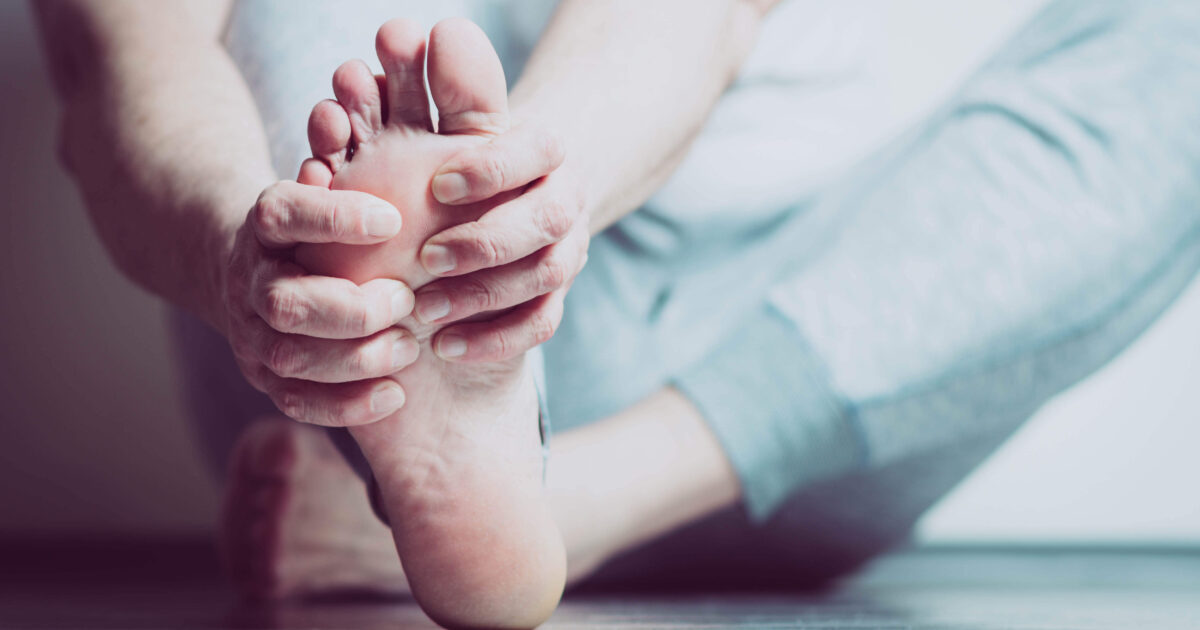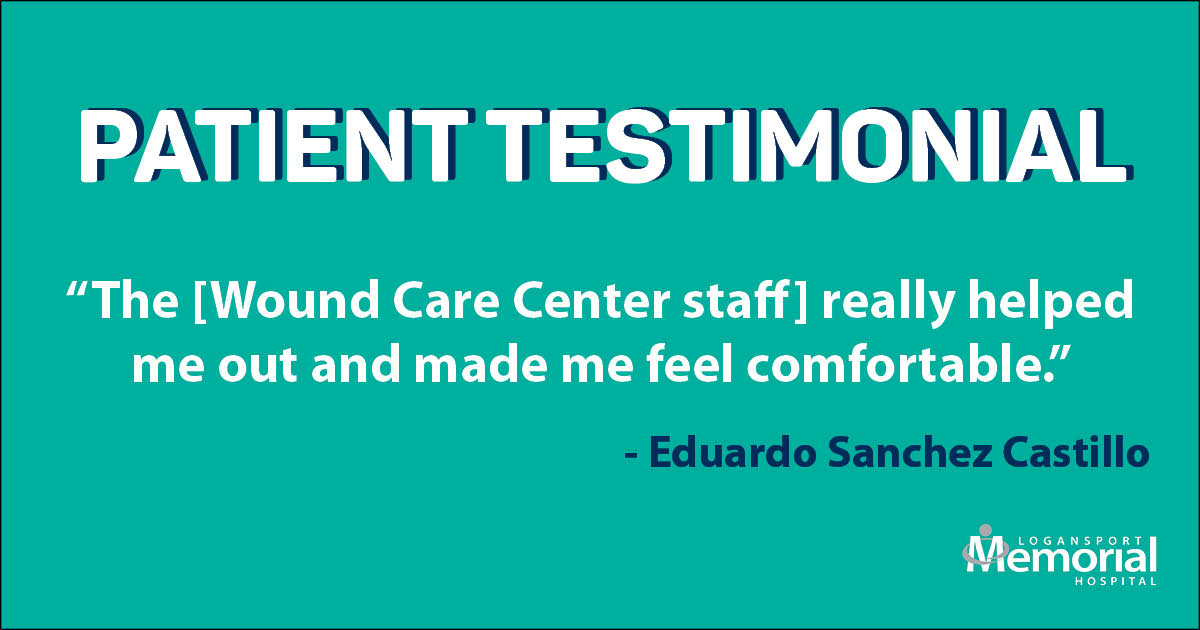Wound infections occur when germs and bacteria get inside the wound and grow within the damaged skin. When a wound has become infected, you may experience symptoms such as pain, swelling, and redness. More severe infections can cause symptoms such as nausea, chills, and fever. If you have a wound that is becoming infected, it’s important that you act fast to avoid any further damage.

Warning signs
While most wounds are able to be treated at home, and will heal nicely if properly taken care of, some wounds can become infected during at home treatment and worsen instead of heal. As the infection becomes worse, pain, redness, and swelling will increase with intensity. Additional warning signs that your wound has become infected include:
- Warm, red skin surrounding the wound
- Yellowish-green discharge/pus leaking from the wound
- Odor coming from the wound
- Red streaks stemming from the wound
- Aches and pains accompanied with fever and chills
- Vomiting
If you begin to experience any of these symptoms, or have noticed that your wound is not healing, contact your primary care provider to be seen. Stopping an infection early is key to having a wound that will heal.
Treating wounds
If you have a deep, serious wound, you should seek attention from a medical provider. Deep or serious wounds may require a deep cleaning and sutures to heal properly and avoid infection.
If your wound is major enough for medical attention, but minor enough to not require an ER visit, you can be receive walk-in care from one of the providers at Logansport Memorial Hospital’s Express Medical Center, located at 3400 E Market St in Logansport, IN 46947.
At-home treatment
If you have a minor wound that can be treated at home, be sure to follow these steps to heal your wound and avoid infection.
- Clean all equipment. If tweezers are required to remove something from your wound, be sure that they are clean and sterilized by wiping them with rubbing alcohol.
- Wash your hands. The best way to fight infection when healing a wound is to be sure you have clean hands when touching the wound. Always wash yours hands with warm water and soap, rinse them thoroughly, and dry them before touching your wound.
- Clean your wound. While it may seem like all you need is a band-aid to do the trick, it’s important that you clean out your wound with warm water. You should also scrub the outside of the wound with warm water and soap, but be sure to avoid getting any soap inside the wound itself. Gently rub the soap around the skin surrounding the wound.
- Air-dry and ointment. To avoid spreading germs on your cleaned out wound, be sure to let it air-dry before applying a band-aid. If you have ointment, such as Neosporin, apply a small amount (if necessary) and then cover with a band-aid.
- Change things out. As your wound heals, it’s important that you follow the above steps every day to keep the band-aid and wound from being saturated. As you clean your wound, the openness allows your wound to “breathe” and heal.
- Leave it alone. The further along you heal, a scab will develop as the skin cells rebuild. Do not pick or peel any scabs related to your wound. This will re-open the wound and take longer for the healing process to be complete.
Never leave a wound left untreated
Whether it be at home or by seeking medical attention. Never let an open wound go untreated. If you plan to let your wound “heal” on its own, it opens you up to risks of infection and a non-healing wound. Be sure to follow the above steps and keep an eye out on your wound. If you follow the steps of at-home treatment, and still see no progress after a few days, call your provider to be seen.
Wound Care Center at Logansport Memorial Hospital
The Logansport Memorial Wound Care Center, managed by Healogics, Inc., provides specialized treatment for chronic or non-healing wounds, which are defined as sores or wounds that have not significantly improved from conventional treatments. When wounds persist, a specialized approach is required for healing.
Get our Complete Guide to Wound Care »
You might also like:
- What to eat to speed up wound healing
- How experts assess and successfully treat a wound that won’t heal
- Restarting wound healing




